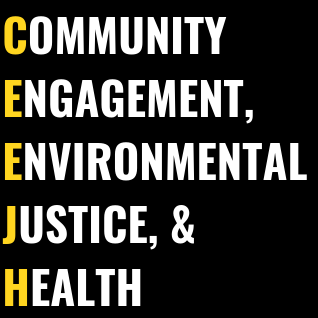Goods Movement, Warehouses, and Environmental Justice in the Eastern US
The transportation sector is the nation’s largest source of greenhouse gas emissions and other air toxics.[1] Goods movement refers to the distribution of freight by all modes of transportation. There are serious public health concerns associated with goods movement, high truck traffic roads, and warehouses due to high levels of air pollution. Many communities near goods movement infrastructure consist of populations of color, and low-wealth residents.[2] These communities have greater exposure to poor air quality as a result of emissions from high traffic density roadways.
Accelerating the electrification of trucks and buses is an essential step to achieve the deep economy-wide emission reductions needed to protect the health of these communities. Working with Environmental Defense Fund through a NESCAUM pledge to action plan CEEJH is utilizing geospatial mapping analysis tools to support fleet electrification in regions including New York, New Jersey, District of Columbia, and Maryland. Partnering with community-based organizations, CEEJH will use the mapping analysis and case studies to increase awareness of the health and environmental benefits of truck electrification in low-income communities, and advocate for public policies that promote clean air and electric vehicle adoption.
Footnotes
https://www.epa.gov/ghgemissions/sources-greenhouse-gas-emissions
https://www.epa.gov/community-port-collaboration/section-environmental-justice-primer-ports

